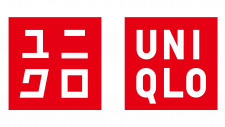Pandora Logo
Pandora, a globally recognized jewelry brand, specializes in hand-finished and contemporary pieces, primarily charms, bracelets, necklaces, earrings, and rings. Originating from Denmark, it has since expanded its presence to over 100 countries. As of now, Pandora operates as a publicly-listed entity on the Nasdaq Copenhagen Stock Exchange, with its ownership distributed among various shareholders. The company’s primary markets include Europe, the Americas, and Asia-Pacific, continually innovating its offerings to appeal to a broad clientele seeking quality and affordability.
Meaning and history
Established in 1982 in Copenhagen, Denmark, by Per Enevoldsen and his then-wife Winnie, Pandora initially functioned as a small jewelry shop. They began by importing jewelry from Thailand, witnessing steady growth. Recognizing potential, by 1987, the couple ceased retail operations to focus on wholesaling.
By 1989, they initiated their manufacturing operations in Thailand. The introduction of the Pandora charm bracelet in 2000 revolutionized its business, becoming a hallmark product. This innovation propelled the brand to international prominence.
Expanding further, Pandora opened its own manufacturing facilities in Thailand during the 2000s, ensuring product quality and craftsmanship. This vertical integration enabled rapid global expansion, with the company entering markets in North America, Europe, and Asia-Pacific.
In 2008, Axcel, a private equity group, acquired a 60% stake, paving the way for an IPO in 2010. Consequently, Pandora became publicly listed on the Nasdaq Copenhagen Stock Exchange.
Throughout its existence, Pandora has faced challenges, like fluctuating sales figures and market competition. However, with periodic product launches and marketing strategies, it has retained a dominant market position. Today, the brand remains synonymous with customizable charm bracelets, while also offering a vast jewelry range, reflecting its journey from a local Danish retailer to a global brand powerhouse.
1982 – 2019
When the store first opened, a distinct signage graced its entrance. As the business blossomed, this signage evolved into a unique emblem, building upon the name’s already budding familiarity with customers. This evolution birthed a unique blend of text and emblematic imagery. The creative intertwining ensured the name’s legibility wasn’t compromised.
The characters, well-spaced, stand out without overlapping, cast in a deep black hue. Their distinctiveness is amplified by the juxtaposition of thick and slender strokes. The terminology is etched in a polished, sans-serif font, crowned with a tripartite royal emblem. This crown, comprised of a curved baseline, spherical mid-points, and sharp, elongated apexes, elegantly floats above the letter “O,” emphasizing a regal touch to the brand’s identity. This majestic element reinforces the brand’s aspiration for unparalleled quality and excellence in its offerings.
2019 – Today
The current insignia experienced subtle refinements: the creators opted for a fresh font style. Presently, the characters showcase a rich black hue complemented by a subtle greyish tint, uniformly crafted with consistent line breadth. The foundational layer of the crown was discarded by the designers, retaining only the trio of orbs and three angular projections. As a result, this component is now not just seen as a crown, but also evokes imagery of a lavish ring adorned with luminous gemstones, symbolizing opulence and elegance. This transformation subtly underlines the brand’s commitment to timeless luxury and their craft in the world of exquisite jewelry.













